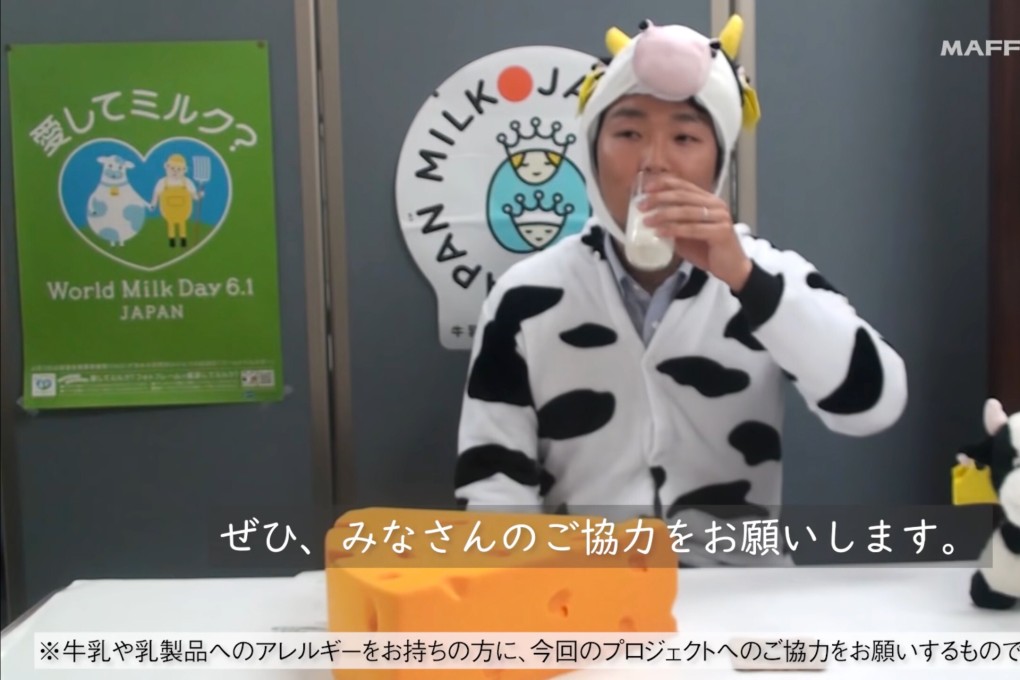Bad moo-ve: cows faint as Japan tells people to drink MORE dairy despite milk shortage
- Japan is suffering a milk shortage as record temperatures lay herds low with heatstroke and demand increases due to lengthened school year
- Adding to the stress on the bovine population is a poorly timed campaign by the agriculture ministry encouraging people to consume more dairy, not less

Yet despite the stress on the country’s cattle, a poorly timed campaign by the agriculture ministry is encouraging people to drink more dairy, not less.
An official of the Japan Dairy Association said output from the nation’s 7.3 million cows was estimated to have contracted by 10 per cent over the summer as livestock suffered in the heat. Average temperatures during August were 2 degrees Celsius higher than usual and even surpassed the all-time highs recorded in the summer of 2010.
On August 17, the temperature in the city of Hamamatsu – home to 120 cattle farms – rose to 41.1 degrees, equalling the highest figure recorded since Japan first began compiling statistics in 1875. On 10 occasions, the temperature in central Tokyo reached at least 35 degrees.

“The heat has been a problem this summer and we are aware that many cows have suffered heat exhaustion,” said the JDA spokesman, who declined to be named.
“Cows suffer from the heat in the same way that humans do and the Holstein livestock that we typically have here for milk production are originally from Europe,” he said. “The climate there is much cooler and less humid than Japan, so this is becoming a question of selecting the right species for this environment.”